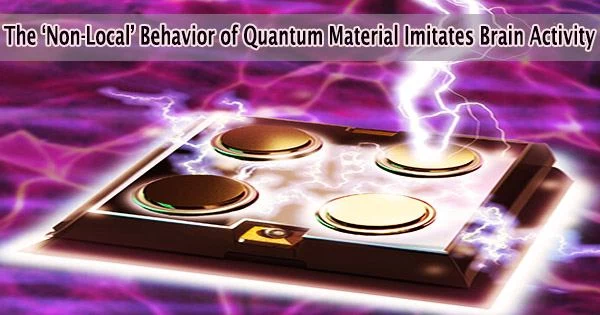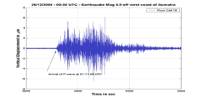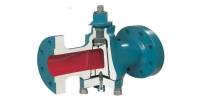We frequently think that machines are more effective than people. After all, computers are capable of solving a challenging arithmetic problem quickly and remembering the name of an actor we frequently forget.
Human brains are able to digest complex layers of information rapidly, accurately, and with almost minimum energy input. Examples include the ability to instantly distinguish between an ocean and a mountain after only having seen one of each. Even yet, the precision of the processing and energy input required by these straightforward human jobs varies greatly.
Creating brain-like computers with minimal energy requirements would revolutionize nearly every aspect of modern life. Funded by the Department of Energy, Quantum Materials for Energy Efficient Neuromorphic Computing (Q-MEEN-C) a nationwide consortium led by the University of California San Diego has been at the forefront of this research.
UC San Diego Assistant Professor of Physics Alex Frañó is co-director of Q-MEEN-C and thinks of the center’s work in phases. In the first phase, he worked closely with President Emeritus of University of California and Professor of Physics Robert Dynes, as well as Rutgers Professor of Engineering Shriram Ramanathan.
Together, their teams were successful in finding ways to create or mimic the properties of a single brain element (such as a neuron or synapse) in a quantum material.
Phase two research from Q-MEEN-C, which was recently published in Nano Letters, demonstrates that electrical stimuli transmitted between adjacent electrodes can also affect non-adjacent electrodes. This discovery, which is often referred to as non-locality, is a significant step toward the development of novel neuromorphic computing systems.
“In the brain it’s understood that these non-local interactions are nominal they happen frequently and with minimal exertion,” stated Frañó, one of the paper’s co-authors. “It’s a crucial part of how the brain operates, but similar behaviors replicated in synthetic materials are scarce.”
The notion to investigate whether non-locality in quantum materials was feasible emerged during the epidemic, as it has with many other scientific initiatives that are currently bearing fruit.
Showing a system that has non-local interactions leads us further in the direction toward how our brains think. Our brains are, of course, much more complicated than this but a physical system that is capable of learning must be highly interactive and this is a necessary first step. We can now think of longer range coherence in space and time.
Robert Dynes
Due to the closure of physical lab facilities, the researchers performed calculations using arrays of several devices to simulate the numerous neurons and synapses seen in the human brain. In running these tests, they found that non-locality was theoretically possible.
When labs reopened, they refined this idea further and enlisted UC San Diego Jacobs School of Engineering Associate Professor Duygu Kuzum, whose work in electrical and computer engineering helped them turn a simulation into an actual device.
A metal conductor was then placed on top of a thin coating of nickelate, a ceramic “quantum material” that exhibits a wealth of electrical characteristics. To transmit an electrical signal to the nickelate, a wire is fastened to the metal. The gel-like hydrogen atoms move into a certain configuration in response to the signal, and the new configuration persists when the signal is turned off.
“This is essentially what a memory looks like,” stated Frañó. “The device remembers that you perturbed the material. Now you can fine tune where those ions go to create pathways that are more conductive and easier for electricity to flow through.”
In the past, it has been difficult and expensive to build networks that can carry enough electricity to operate devices like laptops because they require intricate circuits with constant connection points.
The design concept from Q-MEEN-C is much simpler because the non-local behavior in the experiment means all the wires in a circuit do not have to be connected to each other. Think of a spider web, where movement in one part can be felt across the entire web.
This is analogous to how the brain learns: not in a linear fashion, but in complex layers. Each new skill we acquire strengthens connections in various brain regions, enabling us to distinguish not only between trees and dogs but also between an oak tree and a palm tree or a golden retriever and a poodle.
These pattern recognition activities, which the brain performs so expertly, can only currently be replicated by computer software. AI programs like ChatGPT and Bard use complex algorithms to mimic brain-based activities like thinking and writing. And they do it really well. But without correspondingly advanced hardware to support it, at some point software will reach its limit.
Frañó is eager for a hardware revolution to parallel the one currently happening with software, and showing that it’s possible to reproduce non-local behavior in a synthetic material inches scientists one step closer. The next step will involve creating more complex arrays with more electrodes in more elaborate configurations.
“This is a very important step forward in our attempts to understand and simulate brain functions,” said Dynes, who is also a co-author. “Showing a system that has non-local interactions leads us further in the direction toward how our brains think. Our brains are, of course, much more complicated than this but a physical system that is capable of learning must be highly interactive and this is a necessary first step. We can now think of longer range coherence in space and time.”
“It’s widely understood that in order for this technology to really explode, we need to find ways to improve the hardware a physical machine that can perform the task in conjunction with the software,” Frañó stated. “The next phase will be one in which we create efficient machines whose physical properties are the ones that are doing the learning. That will give us a new paradigm in the world of artificial intelligence.”
This work is primarily supported by Quantum Materials for Energy Efficient Neuromorphic Computing, an Energy Frontier Research Center funded by the U.S. Department of Energy, Office of Science, Basic Energy Sciences and funded by the U.S. Department of Energy (DE-SC0019273). A full list of funders can be found in the paper acknowledgements.
















